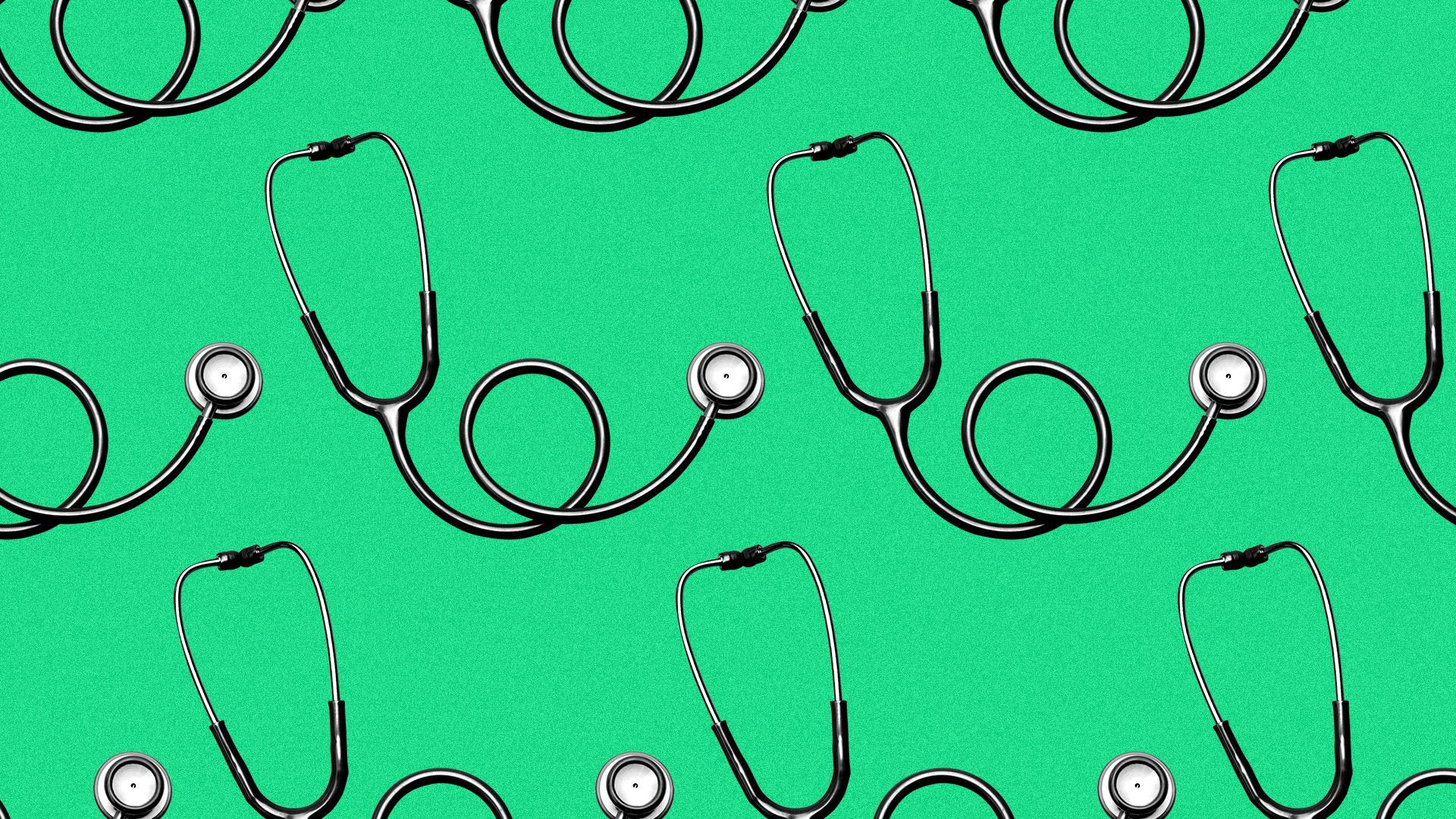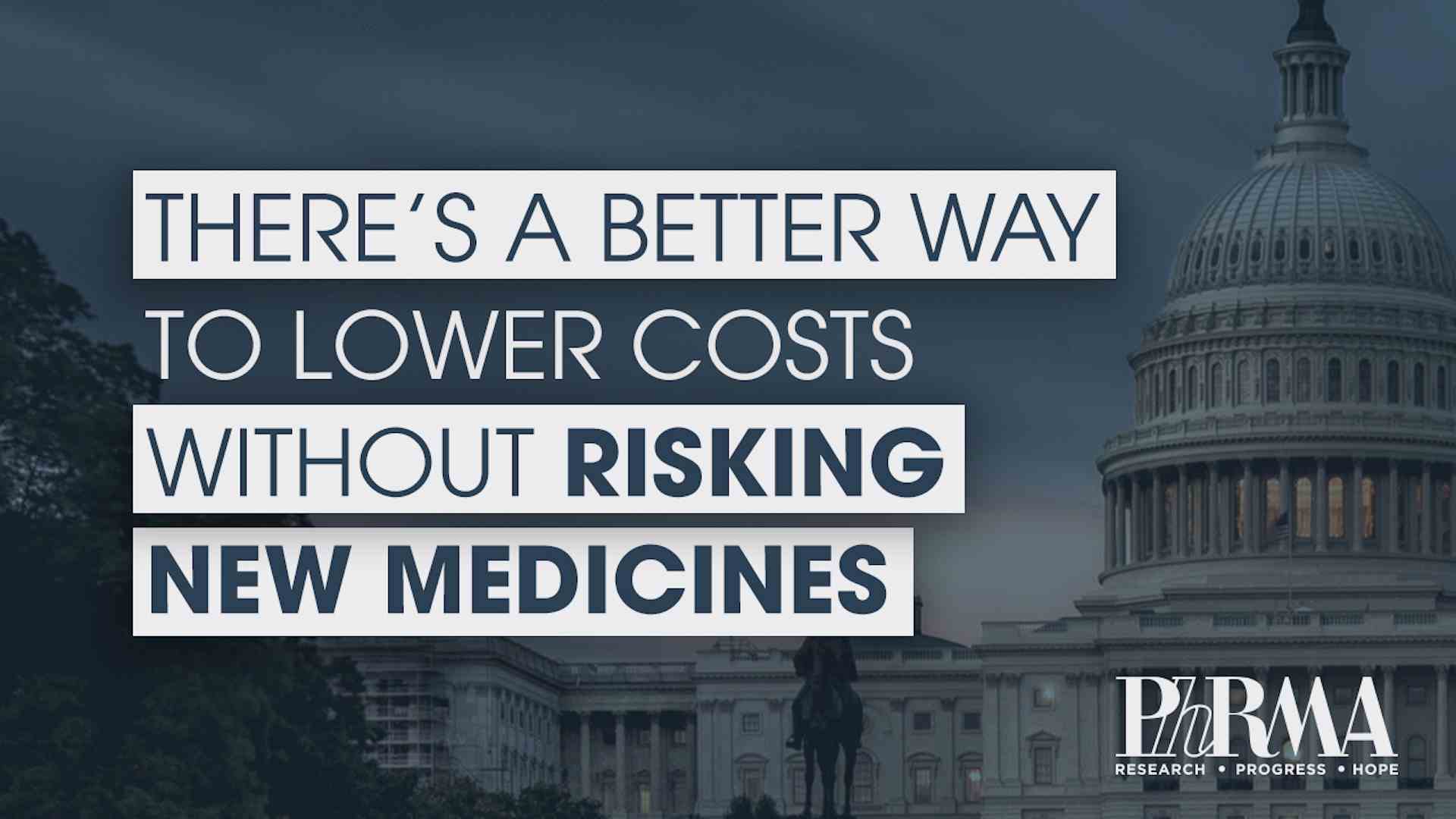Plus, a profit boom is coming for health care | Wednesday, July 20, 2022
| | | | | | | Presented By PhRMA | | | | Axios Vitals | | By Tina Reed · Jul 20, 2022 | | 🐫 Good morning, Vitals readers. We've made it halfway through the week! Today's newsletter is 968 words — a 3.5 minute read. 💻 Tune in at 12:30pm CT for an Axios Smart Take virtual event to see my interview with U.S. Surgeon General Vivek H. Murthy. Register here. | | | | | | 1 big thing: Health reform may be making gender wage gaps worse for female docs |  | | | Illustration: Shoshana Gordon/Axios | | | | It's no secret that gender pay disparities are a problem in medicine, but it turns out reforms to how we pay doctors — specifically in primary care — could make the problem worse. Why it matters: The shift to value-based care aims to incentivize better care delivery by paying doctors for what matters most — patient outcomes — rather than by how many services they perform. - But a new study in the Annals of Internal Medicine found these reforms could wind up favoring practice patterns more closely associated with male doctors while also missing the mark on the very goal they've set out to address: providing better care to patients.
State of play: Previous studies have shown female doctors generally tend to spend more time with patients (and in some scenarios, produce better outcomes) than male doctors. - But that extra time adds up, meaning those female doctors are generally reimbursed for fewer patient visits, contributing to the gender pay gap.
- The study, led by Harvard Medical School and Brigham and Women's Hospital researchers, found female primary care physicians made 21% less than their male counterparts under the traditional fee-for-service model.
"We wondered: There are other ways of paying doctors that policymakers are experimenting with. How does the wage gap fare under those alternative models?" Ishani Ganguli, lead author and assistant professor of medicine at Brigham and Women's Hospital, told Axios. Be smart: The news wasn't great, as it turns out. - The researchers compared data for more than 1,400 male and female doctors from more than 1,200 primary care practices across the country.
- They created a simulation of doctor pay under what are known as "capitated" payment models that limit how much practices can be paid for caring for a population of patients.
- Such models are increasingly being tested in federal health programs but for the most part haven't been expanded nationally.
The bottom line: In most of those scenarios, the pay gap persisted or even worsened. Go deeper. |     | | | | | | 2. Gender bias persists in other areas of medicine |  | | | Illustration: Brendan Lynch/Axios | | | | From the equipment they use to the way they are treated by patients, the experience of gender bias that women in medicine experience stretches far beyond pay gaps. Why it matters: Despite holding powerful careers, female doctors say they regularly experience or see examples of gender discrimination that is essentially baked into the system. By the numbers: A recent Medscape survey from more than 2,300 doctors in 29 specialties found nearly 60% of female physicians said they'd seen or experienced gender discrimination from patients while about 20% of male doctors said the same. - 46% of male physicians say professional opportunities are largely the same, regardless of gender, versus 25% of female physicians.
Thought bubble: My reporting on pay disparities for female doctors found plenty of instances in which they commiserated online about experiences with bias on the job. "It's still that culture that it's a man's world and a woman is seen as weak if she asks for any accommodation," Amelia Tower, a breast cancer surgeon at Texas Health Fort Worth, told me. - She regularly hears about female residents experiencing stereotyping from colleagues and abusive attitudes from patients. She's seen women experiencing slower career advancement than their male counterparts.
- And, in a more tangible example, equipment used in hospitals across the country like surgical instruments or PPE are still designed for men's hands.
- "It's 2022 and we still don't have scrubs that fit women," she said.
|     | | | | | | 3. Health industry's post-pandemic profit boom |  Reproduced from McKinsey; Chart: Axios Visuals Health care profits will rise significantly over the next few years, according to a new McKinsey & Company estimate — further evidence that providers and payers are doing just fine in the wake of the pandemic, Axios' Caitlin Owens writes. Why it matters: Every dollar in profits is a dollar spent by someone else — whether that's individual patients, employers or taxpayers. Details: Some major trends to watch... - Payer profits will increasingly come from government markets, as the Medicare-eligible population grows and Medicare Advantage becomes even more popular. Managed Medicaid plans are also expected to see further revenue growth.
- The pandemic has sped up the transition away from expensive acute and post-acute care settings to cheaper freestanding and non-acute sites, which have higher profit margins.
- An aging population will mean more chronic conditions and higher demand for care — a trend the pandemic likely exacerbated.
Yes, but: Inflation is the wild card here. |     | | | | | | A message from PhRMA | | Government price setting could mean fewer new medicines | | |  | | | | Today, there are: - 90 medicines in development for Alzheimer's disease.
- 26 for childhood diabetes.
- 119 for breast cancer.
And the list goes on — but which diseases could go untreated if Congress passes government price setting? There is a better way to lower costs without risking new medicines. | | | | | | 4. Soaring overdose deaths expose disparities |  Drug overdose deaths surged by 30% during the first year of the pandemic, with Black and Native American communities bearing a disproportionately higher burden, the CDC reported on Tuesday. - Overdose rates were highest in areas with the most treatment options available, in 25 states and the District of Columbia, where data was available, the report found.
By the numbers: In 2020, there were 91,799 deaths from a drug overdose, according to HHS and from 2019 to 2020, overdose rates increased the most among teens and young adults. - Black youths and young adults aged 15-24 years, experienced the largest overdose death rate increase at 86%.
- Native Americans aged 25-44 years saw an increase of 49% in the rate of overdose deaths.
- White people aged 15-24 years had a 34% increase in overdose death rate.
|     | | | | | | 5. Catch up quick: | | 💰 The healthcare arm of JPMorgan Chase & Co. plans to invest $30 million in a three-year-old health plan administrator called Centivo, a health plan for self-funded employers. (Bloomberg) 👉 President Biden's proposal to mandate increased staffing minimums at nursing homes will require $10 billion a year to hire tens of thousands more caregivers, a new report says. (AHCA/NCAL) 💉 CDC Director Rochelle Walensky authorized the use of Novavax's COVID vaccine as a primary series for adults 18 and over on Tuesday. (Axios) 🏛 The OB-GYN who performed an abortion for a 10-year-old girl from Ohio who was raped, took the first legal step to sue Indiana's attorney general for defamation over his comments alleging medical misconduct. (Axios) |     | | | | | | A message from PhRMA | | Patients lose when the government sets prices | | |  | | | | Government price setting cripples innovation and has potentially devastating consequences for patients. Why it's important: There are 119 medicines in development for breast cancer, but price-setting policies can change that. Tell Congress to protect access to new medicines. | | |  | | Why stop here? Let's go Pro. | | | | | | Axios thanks our partners for supporting our newsletters. If you're interested in advertising, learn more here.
Sponsorship has no influence on editorial content. Axios, 3100 Clarendon Blvd, Arlington VA 22201 | | | You received this email because you signed up for newsletters from Axios.
Change your preferences or unsubscribe here. | | | Was this email forwarded to you?
Sign up now to get Axios in your inbox. | | | | Follow Axios on social media:    | | | | | |








No comments:
Post a Comment